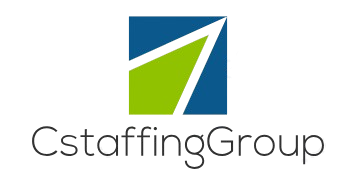Leveraging Data for Non-Profit Success
Non-profit organizations play a vital role in addressing societal issues, advocating for change, and supporting communities in need. In today’s digital age, data has become a powerful tool for non-profits to enhance their impact, improve efficiency, and drive meaningful outcomes. By leveraging data effectively, non-profits can make informed decisions, optimize their operations, and demonstrate the value of their work to stakeholders. In this article, we will explore the various ways in which non-profits can harness the power of data to achieve success and create lasting change.
The Power of Data in Non-Profit Sector

Data is the lifeblood of any organization, including non-profits. It provides valuable insights into the needs of the communities they serve, the effectiveness of their programs, and the impact of their work. By collecting, analyzing, and interpreting data, non-profits can identify trends, track progress, and measure outcomes. This enables them to make evidence-based decisions, allocate resources efficiently, and demonstrate accountability to donors and supporters.
For example, a non-profit working to end homelessness can use data to identify the most vulnerable populations, assess the effectiveness of different intervention strategies, and track the number of individuals who have been housed as a result of their efforts. By analyzing this data, the organization can refine its programs, target its resources more effectively, and ultimately make a greater impact in the community.
Collecting Relevant Data

One of the key challenges for non-profits is collecting relevant and reliable data. Many organizations struggle with limited resources, outdated systems, and a lack of technical expertise. However, there are several strategies that non-profits can use to overcome these challenges and gather the data they need to make informed decisions.
One approach is to leverage technology to streamline data collection processes. For example, non-profits can use online surveys, mobile apps, and social media platforms to gather information from clients, volunteers, and other stakeholders. By using these tools, non-profits can collect data in real-time, reach a wider audience, and obtain more accurate and up-to-date information.
Analyzing and Interpreting Data

Once data has been collected, non-profits need to analyze and interpret it to extract meaningful insights. This process involves using data analysis techniques such as statistical analysis, data visualization, and predictive modeling to identify patterns, trends, and correlations within the data.
For example, a non-profit focused on environmental conservation could analyze data on wildlife populations, habitat loss, and climate change to identify areas of high conservation priority. By visualizing this data on a map, the organization can pinpoint the most critical areas for protection, prioritize its conservation efforts, and advocate for policy changes to safeguard these ecosystems.
Impact Measurement and Reporting

One of the most important uses of data for non-profits is impact measurement and reporting. By tracking key performance indicators (KPIs) and outcomes, non-profits can demonstrate the effectiveness of their programs, communicate their impact to stakeholders, and make data-driven decisions to improve their performance.
For example, a non-profit working to improve literacy rates among children can measure its impact by tracking the number of books distributed, the reading levels of students, and the academic performance of participants. By collecting this data over time, the organization can assess the success of its programs, identify areas for improvement, and make adjustments to achieve better outcomes.
Challenges and Opportunities
While data can be a powerful tool for non-profits, it also presents challenges and opportunities. Non-profits may struggle with data privacy and security concerns, limited technical capacity, and the high cost of data collection and analysis. However, there are several ways that non-profits can address these challenges and capitalize on the opportunities that data provides.
One approach is to invest in staff training and capacity building to enhance data literacy and technical skills within the organization. By providing staff with the tools and training they need to collect, analyze, and interpret data effectively, non-profits can unlock the full potential of data and drive better decision-making and outcomes.
Case Studies
There are numerous examples of non-profits that have successfully leveraged data to achieve significant impact in their communities. One such example is charity: water, a non-profit organization that provides clean and safe drinking water to people in developing countries. By using data to track the location and status of water projects, monitor water quality, and measure the impact of its programs, charity: water has been able to demonstrate transparency, accountability, and effectiveness to its donors and supporters.
Another example is Feeding America, a nationwide network of food banks that works to end hunger in the United States. By analyzing data on food insecurity, poverty rates, and demographic trends, Feeding America can target its resources to the communities most in need, optimize its distribution processes, and advocate for policy changes to address the root causes of hunger.
Common Misconceptions
One common misconception about data in the non-profit sector is that it is only relevant for large organizations with extensive resources and technical expertise. In reality, data can benefit non-profits of all sizes and capacities, from small grassroots organizations to large international NGOs.
Another misconception is that data is only useful for reporting and compliance purposes. While data is essential for accountability and transparency, it can also be a powerful tool for driving innovation, improving services, and achieving greater impact in the community.
Conclusion
In conclusion, data is a valuable asset for non-profits seeking to enhance their impact, improve their operations, and drive meaningful change. By collecting relevant data, analyzing and interpreting it effectively, and measuring their impact, non-profits can make informed decisions, demonstrate accountability, and achieve success in their mission. As technology continues to advance and data becomes more accessible, non-profits have an unprecedented opportunity to leverage data to create lasting and transformative impact in the communities they serve.
To wrap things up, the potential of data for non-profit success is vast and promising. As non-profits embrace data-driven approaches and prioritize data literacy within their organizations, they can unlock new opportunities for growth, innovation, and social change. By harnessing the power of data, non-profits can amplify their impact, engage with stakeholders more effectively, and create a more sustainable and equitable future for all.




